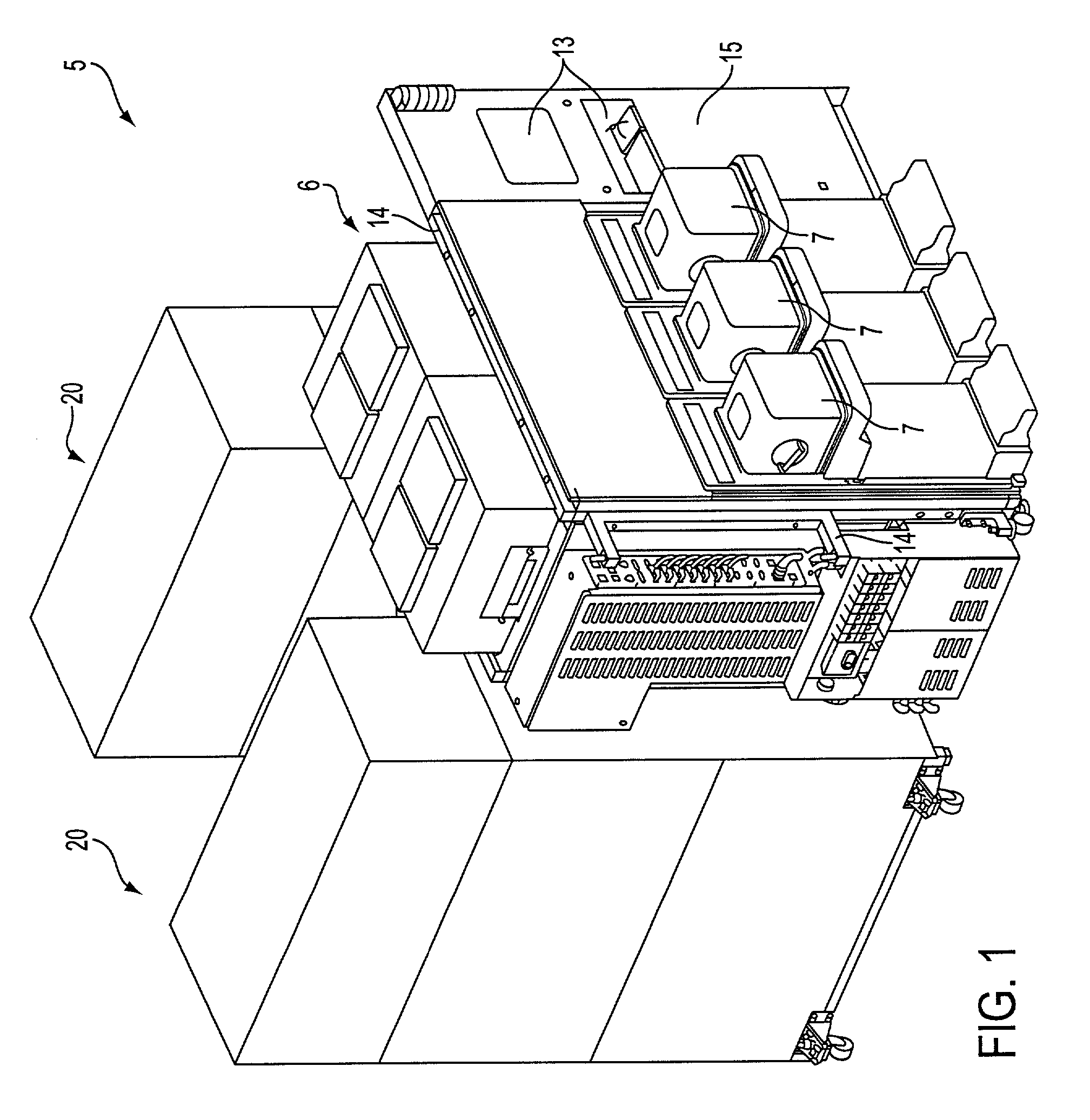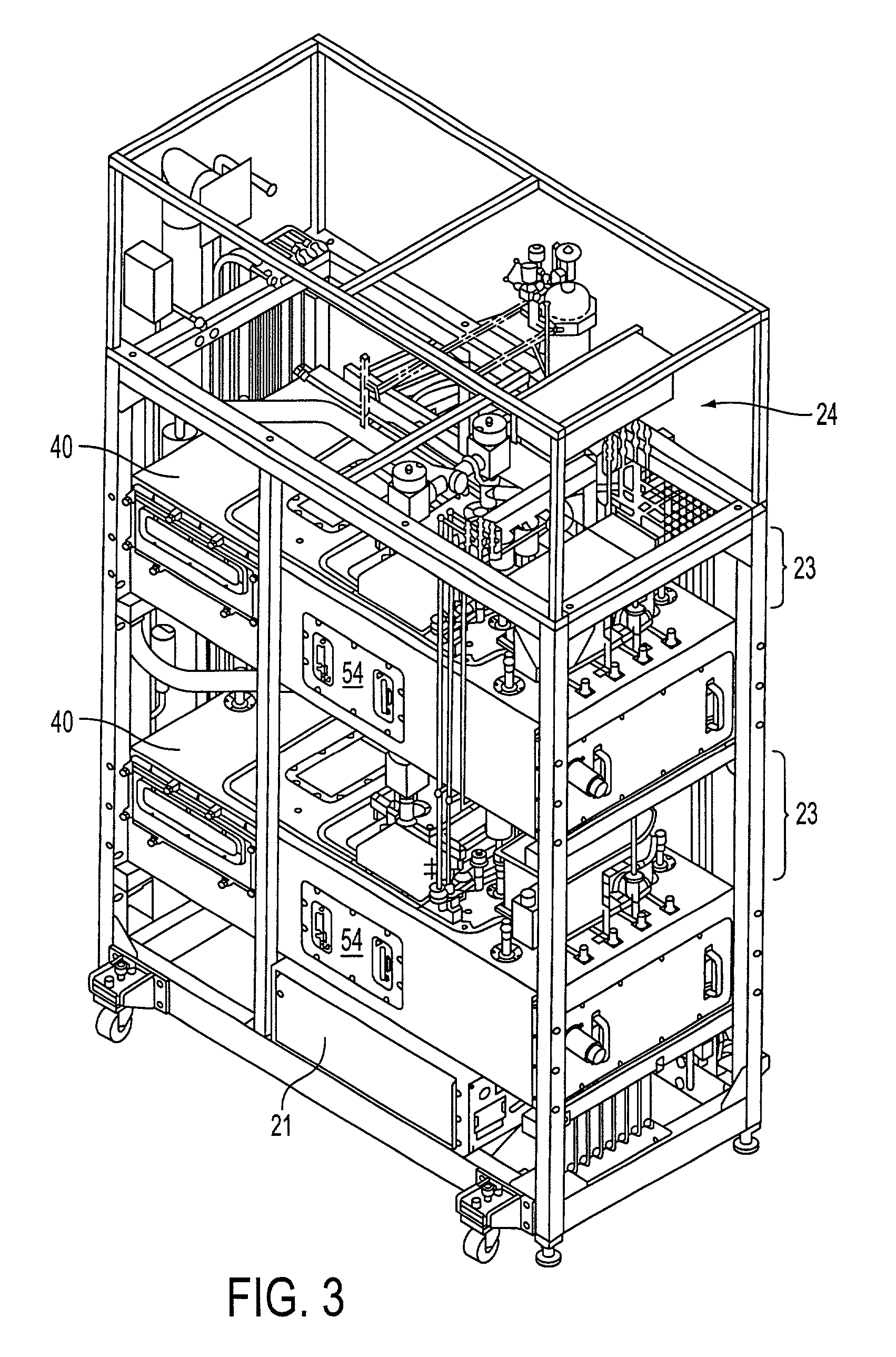Semiconductor wafer processing system with vertically-stacked process chambers and single-axis dual-wafer transfer system
a technology of process chambers and semiconductors, applied in the direction of conveyor parts, transportation and packaging, coatings, etc., can solve the problems of short mean time between failures, high apparatus cost, slow wafer processing,
- Summary
- Abstract
- Description
- Claims
- Application Information
AI Technical Summary
Benefits of technology
Problems solved by technology
Method used
Image
Examples
Embodiment Construction
[0086] Referring particularly to FIGS. 16(a)-(l), an exemplary method of semiconductor wafer transfer and processing in accordance with the present invention is schematically illustrated in which a loadlock chamber 80 is attached to a respective process chamber 40. A loadlock transfer arm (not shown in FIG. 16) similar to transfer arm 83 receives semiconductor wafers from a front end robot 8 (not shown in FIG. 16) moves the wafers between the loadlock chamber and the process chamber.
[0087] Three tiers illustrated within loadlock chamber 80 represent wafer positions when resting on upper wafer shelf 85', lower wafer shelf 87', and cooling plate 95' within loadlock chamber 80. A fourth "pins up" wafer position slightly above the cooling plate is not shown, but is discussed below. Two tiers illustrated within process chamber 40 represent wafer positions when the wafer is resting on upper wafer shelf 85" and lower wafer shelf 87" within process chamber 40. Other wafer positions such as ...
PUM
| Property | Measurement | Unit |
|---|---|---|
| Height | aaaaa | aaaaa |
Abstract
Description
Claims
Application Information
 Login to View More
Login to View More - R&D
- Intellectual Property
- Life Sciences
- Materials
- Tech Scout
- Unparalleled Data Quality
- Higher Quality Content
- 60% Fewer Hallucinations
Browse by: Latest US Patents, China's latest patents, Technical Efficacy Thesaurus, Application Domain, Technology Topic, Popular Technical Reports.
© 2025 PatSnap. All rights reserved.Legal|Privacy policy|Modern Slavery Act Transparency Statement|Sitemap|About US| Contact US: help@patsnap.com



